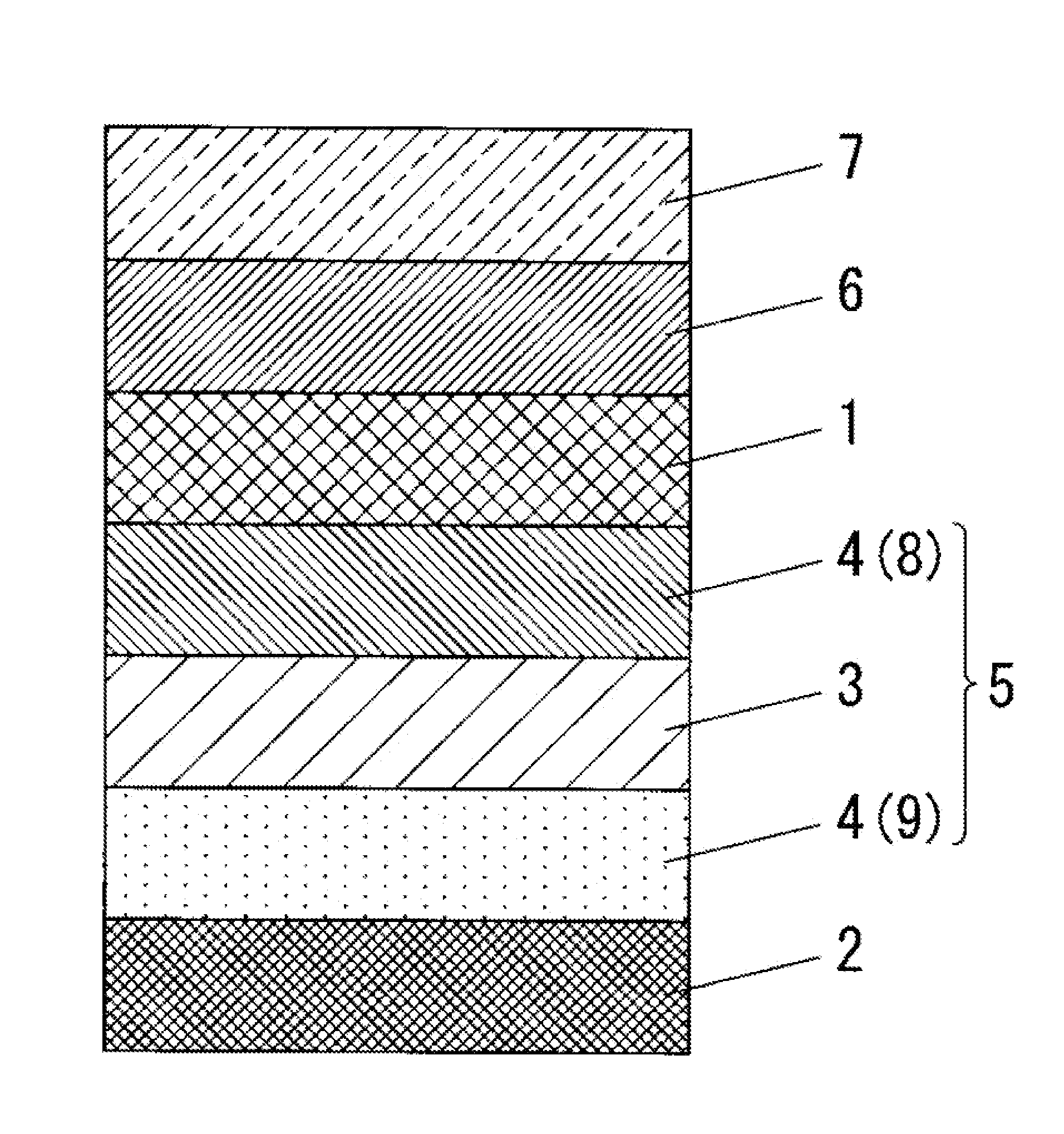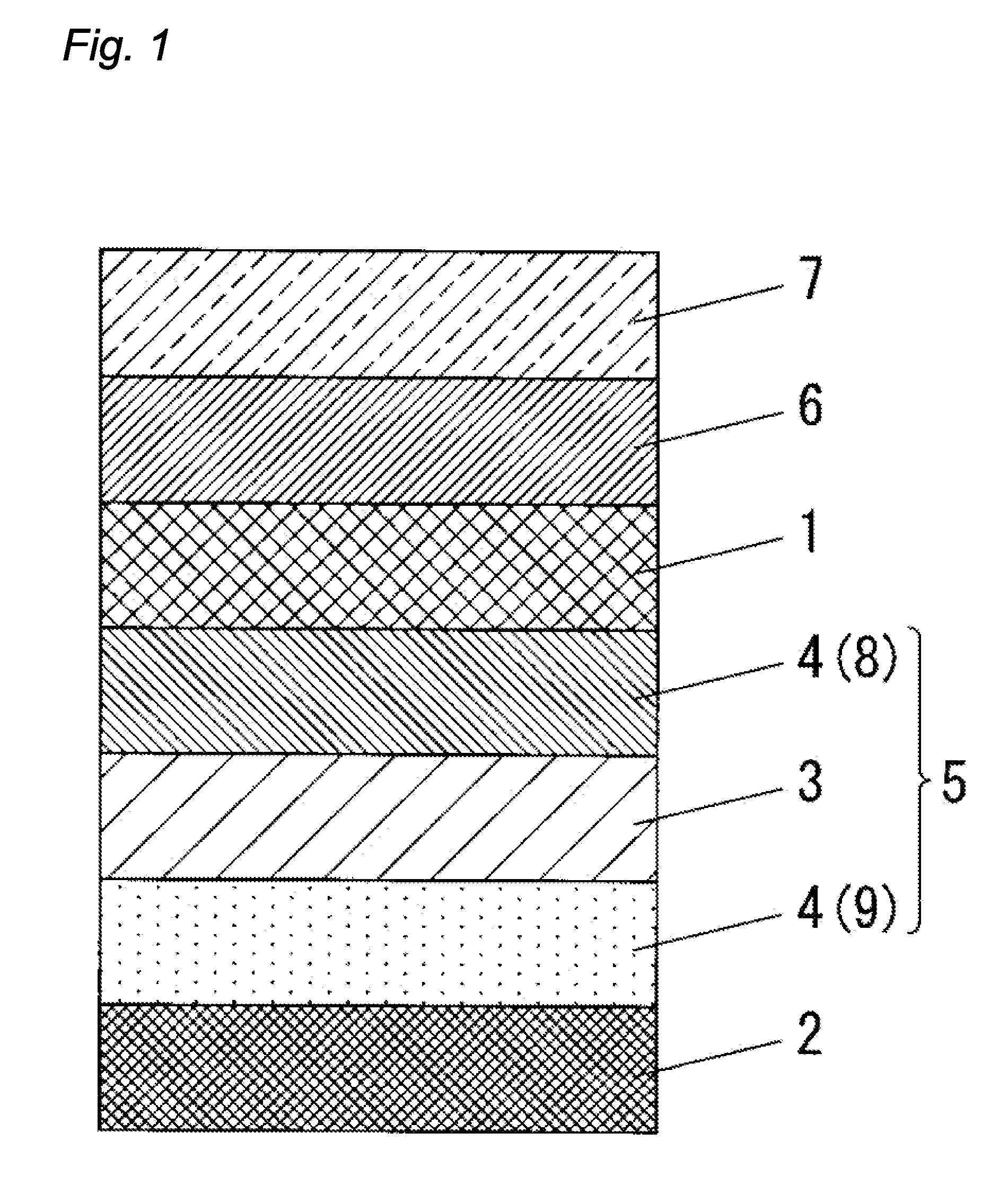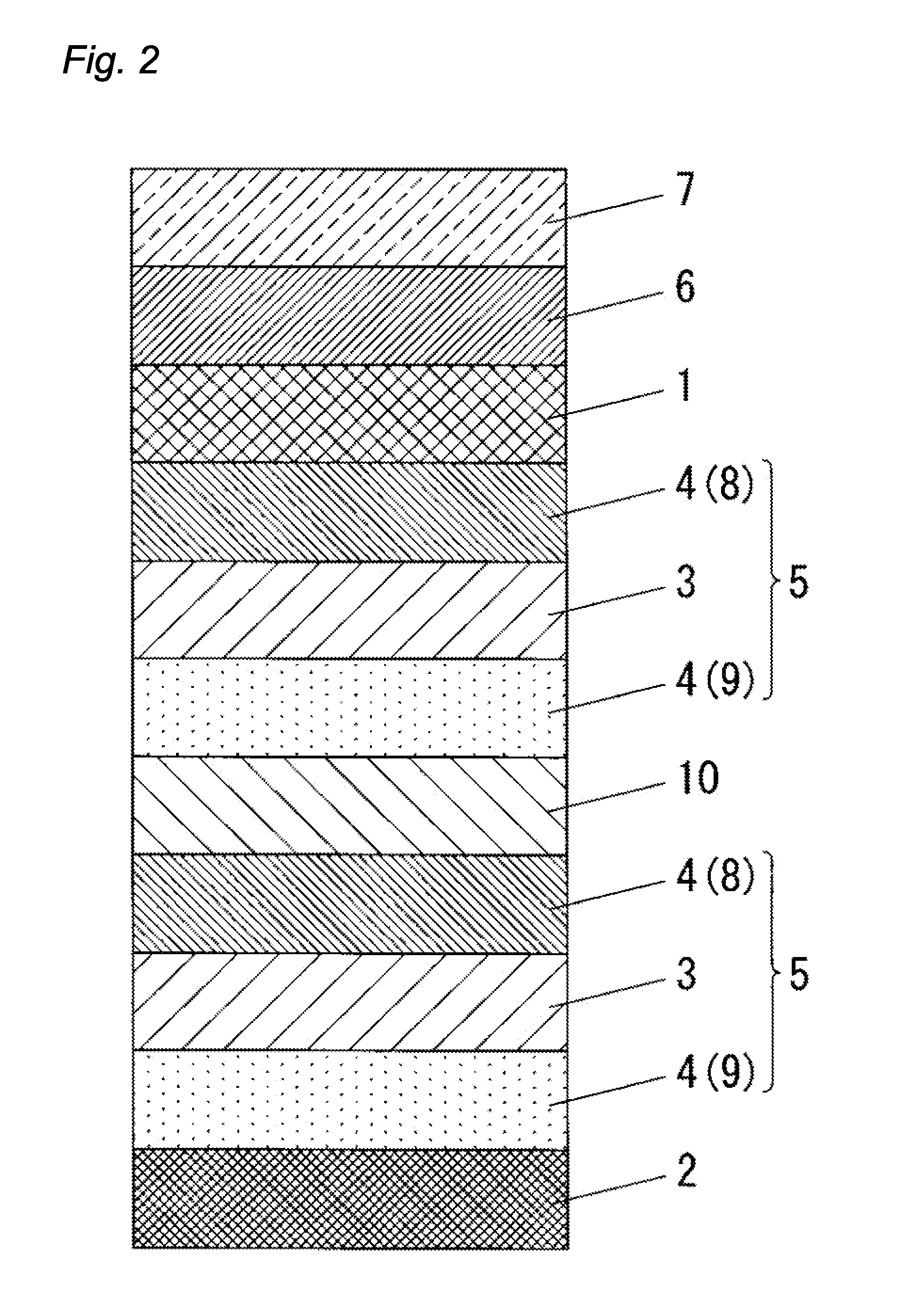Organic electroluminescence device
a technology of electroluminescence device and organic material, which is applied in the direction of thermoelectric device, discharge tube luminescnet screen, organic semiconductor device, etc., can solve the problems of reducing the thickness between the light emissive layer and the light scattering region provided to the components, and the phase shift is sufficiently unconsidered in the patent literature, so as to enhance the light, enhance the light, and enhance the light between the luminescent point and the light reflective electrode.
- Summary
- Abstract
- Description
- Claims
- Application Information
AI Technical Summary
Benefits of technology
Problems solved by technology
Method used
Image
Examples
example 1
[0061]In the organic electroluminescence device, the glass substrate 6 having a thickness of 0.7 mm was prepared. The glass substrate 6 was provided with ITO film. The ITO film had a thickness of 150 nm and had a sheet resistance of 10 ohm per square. The ITO film had a thickness of 150 nm, and had a sheet resistance of 10 ohm per square. The substrate 6 was etched and cut in order to form the glass substrate 6 with the ITO film having a size shown in FIG. 3. Consequently, the ITO film was formed as the anode which acts as the light transmissive electrode 1. The glass substrate 6 with the ITO was cleaned by ultrasonic cleaning with pure water, acetone, and isopropyl alcohol. Subsequently, the glass substrate 6 with the ITO was cleaned by vapor cleaning with vapor of the isopropyl alcohol. Subsequently, the glass substrate 6 with the ITO was cleaned by UV ozone cleaning for 10 minutes.
[0062]Subsequently, the glass substrate 6 with the ITO was placed within a vacuum deposition equipme...
example 2
[0063]The organic electroluminescence device was obtained in the same manner as in example 1 except that the electron transport layer 9 had a thickness of 350 nm.
example 3
[0064]The organic electroluminescence device was obtained in the same manner as in example 1 except that the electron transport layer 9 had a thickness of 400 nm.
PUM
 Login to View More
Login to View More Abstract
Description
Claims
Application Information
 Login to View More
Login to View More - R&D
- Intellectual Property
- Life Sciences
- Materials
- Tech Scout
- Unparalleled Data Quality
- Higher Quality Content
- 60% Fewer Hallucinations
Browse by: Latest US Patents, China's latest patents, Technical Efficacy Thesaurus, Application Domain, Technology Topic, Popular Technical Reports.
© 2025 PatSnap. All rights reserved.Legal|Privacy policy|Modern Slavery Act Transparency Statement|Sitemap|About US| Contact US: help@patsnap.com



